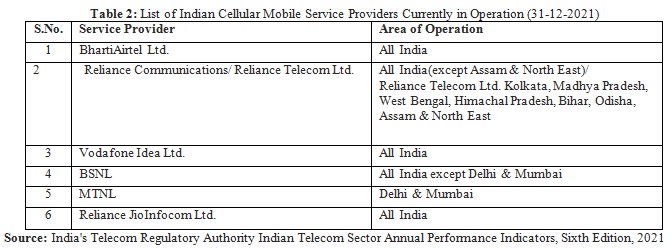Prospects and Challenges of Telecom Sector and 5G Service in Indian Market
DOI:
https://doi.org/10.54741/ssjar.2.5.2Keywords:
5g, wireless, wireline, requirement, future, advancement, telecomAbstract
The adoption of mobile services is being studied using a wide range of ideas. Because of this, many models and a wide range of adoption-affecting factors have been used to envision how quickly and widely mobile services would be adopted. As a result, the idea of adopting mobile services is currently, at best, chaotic and convoluted. The sector is experiencing stagnant customer demand and revenue, and all the expectations for a recovery are centred on 5G. Due to these characteristics, the Indian market, which is currently among the biggest and fastest-growing, is also facing a number of difficulties. Problems include a stagnant client base and revenue, fierce competition, low customer retention, and disparities between urban and rural areas. All interested parties will benefit from a concept that can succinctly characterise the adoption of mobile services for all types of services and be used globally, especially in the Indian context.
Downloads
References
Haard Mehta, Darpit Patel, Bhaumik Joshi, & HardikModi. (2013). 5G technology of mobile communication: A survey. International Conference on Intelligent Systems and Signal Processing (ISSP).
B. Bangerter, S. Talwar, R. Arefi, & K. Stewart. (2014). Networks and devices for the 5G era. IEEE Commun. Mag. doi: 10.1109/MCOM.2014.6736748.
Balash, F., Yong, Z, & Bin Abu, B. (2011). Lecturers and educational technology: Factors affecting educational technology adoption in teaching. Proceedings of the 2nd International Conference on Education and Management Technology, IACSIT Press, Singapore.
Naser Al-Falahy, & Omar Alani. (2017). Technologies for 5G networks: Challenges and opportunities IT professional.
Mac Callum, K., & Jeffrey, L. (2014). Factors impacting teachers' adoption of mobile learning. Journal of Information Technology Education, 13.
Kalvin Bahia, & Stefano Suardi. (2019). GSMA intelligence report the state of mobile internet connectivity 2019.
Agarwal, R., Sambamurthy, V., & Stair, R. M. (2000). Research report: The evolving relationship between general and specific computer self-efficacy-an empirical assessment. Information Systems Research,11(4), 418-430. doi:10.1287/isre.11.4.418.11876.
Sapana Singh, & Pratap Singh. (2012). Key concepts and network architecture for 5g mobile technology. International Journal of Scientific Research Engineering & Technology (IJSRET), 1(5), 165-170.
http://www.slideshare.net/upadhyayniki/5g-wireless- technology-14669479.
Gupta, A., Dogra, N., & George, B. (2018). What determines tourist adoption of smartphone apps? An analysis based on the UTAUT-2 framework. Journal of Hospitality and Tourism Technology.

Downloads
Published
How to Cite
Issue
Section
ARK
License
Copyright (c) 2022 Dr. Chitranjan Singh

This work is licensed under a Creative Commons Attribution 4.0 International License.
Research Articles in 'Social Science Journal for Advanced Research' are Open Access articles published under the Creative Commons CC BY License Creative Commons Attribution 4.0 International License http://creativecommons.org/licenses/by/4.0/. This license allows you to share – copy and redistribute the material in any medium or format. Adapt – remix, transform, and build upon the material for any purpose, even commercially.










